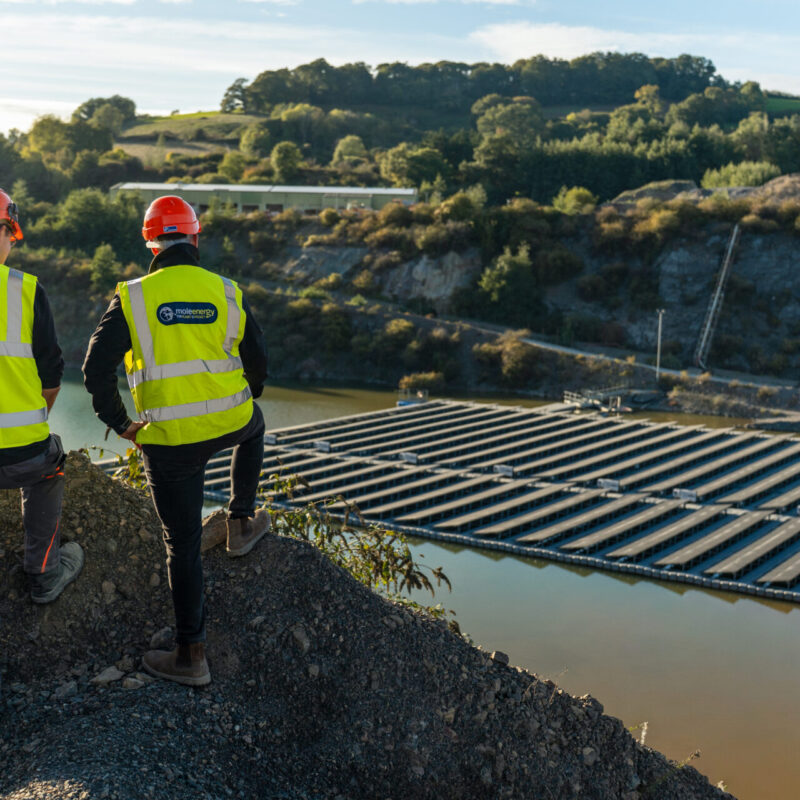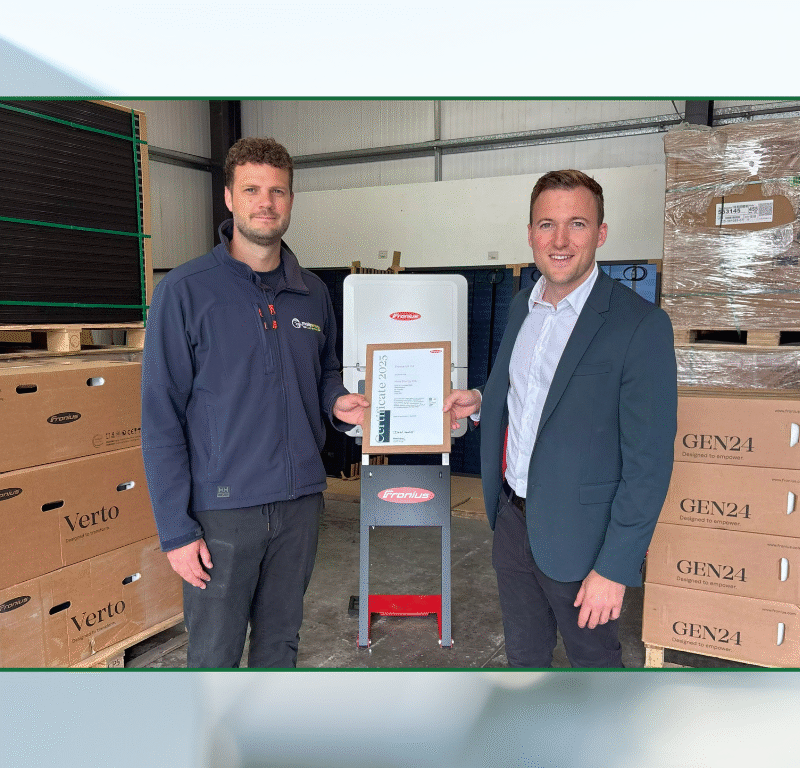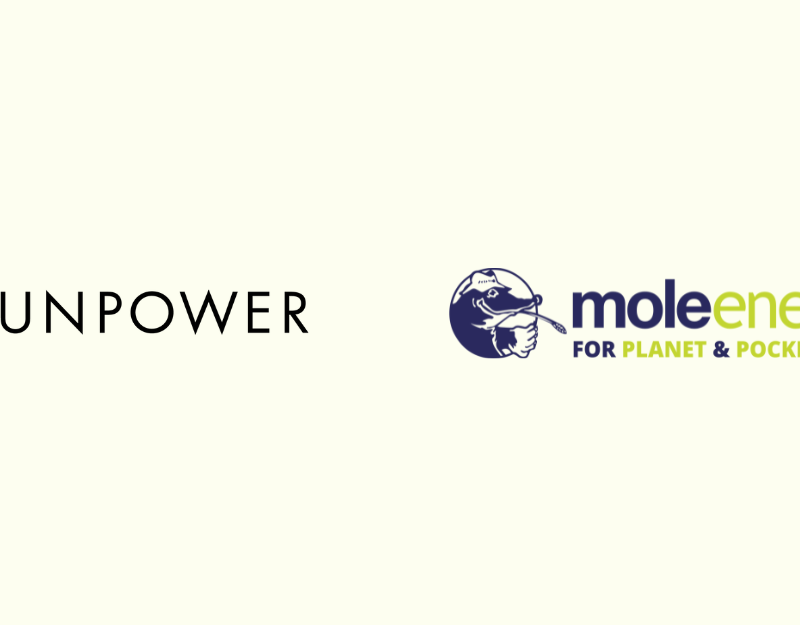
EJW Glendinning and Mole Energy have successfully completed one of the South West’s most innovative renewable energy projects: a floating solar array at Linhay Quarry. This joint initiative marks a significant step forward in sustainable energy for the quarrying industry and showcases the power of collaboration in tackling carbon emissions and rising energy costs.
The partnership began in 2019 when Glendinning, a long-standing Devon-based business, sought to reduce its environmental impact and improve energy resilience. Working closely with Mole Energy’s technical team, the two companies developed a phased solar strategy, starting with rooftop installations across the quarry site. These systems now deliver 627.51 kilowatts peak (kWp) of clean energy.
Looking to expand further, Glendinning and Mole Energy explored options beyond traditional ground-mounted systems, which were not viable due to quarry reserves. Together, they identified the site’s operational lake, used daily for washing stone, vehicles and dampening roads, as an ideal location for a floating solar array.
Over 10 months, the partners designed and installed a system comprising 1,300 floating solar panels and nine inverters, mounted on galvanized frames and floats. The combined rooftop and floating systems now produce 1,158 kWp, generating over 1.1 million kilowatt hours annually. This significantly reduces Glendinning’s reliance on grid electricity, lowers operational costs, and supports its long-term sustainability goals.
“This project is a testament to what can be achieved when businesses work together with a shared vision,” said Mark Glendinning, Operations Director. “We’re proud to be leading the way in renewable energy within the quarrying sector.”
Floating solar, also known as “floatovoltaics” is an emerging technology in the UK. The Linhay Quarry installation is one of the first of its kind in the South West, offering multiple benefits: improved panel efficiency through natural water cooling, preservation of land space, and reduced algae growth by shading the water.
The lake’s closed-loop water system integrates seamlessly with the solar array, making it a natural fit for the site’s daily operations. The energy generated powers everything from heavy machinery to office buildings, helping Glendinning move closer to energy independence.
“This has been a true partnership from day one,” added Mole Energy’s Managinfg Director, Charlie Findlay. “By combining our expertise with Glendinning’s deep understanding of their site, we’ve delivered a solution that’s both practical and pioneering.”
As part of the Mole Valley Farmers family, Mole Energy continues to support farms, homes, and industries in making the most of their space, and their energy future.
The latest







